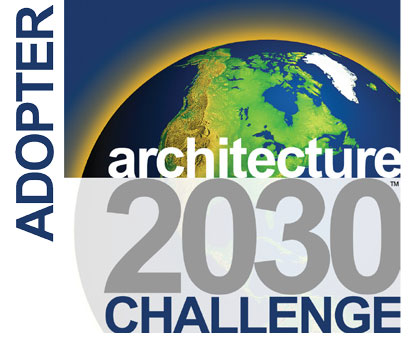Energy & Atmosphere
According to the U.S. Department of Energy, buildings use 39 percent of the energy and 74 percent of the electricity produced each year in the United States.
The Energy & Atmosphere category encourages a wide variety of energy strategies: commissioning; energy usage monitoring; efficient design and construction; efficient equipment, systems and lighting; the use of renewable and clean sources of energy, generated on-site or off-site; and other innovative strategies.
Optimize Energy Performance
To maximize energy performance and reduce the impact on the environment from excessive energy use Morrissey Engineering uses a well-insulated envelope, low-e glazing, geothermal water-source heat pumps, energy recovery unit, daylight harvesting, occupant sensing lighting control, and energy-efficient lighting. As a result, total energy consumption has been reduced by more than 50 percent compared to the ASHRAE 90.1 baseline. This project also has achieved “Designed to Earn the Energy Star” certification, with a rating of 98 and meets the requirements of the Architecture 2030 challenge. Click here to read more about Energy Star.
On-Site Renewable Energy
To offset building energy costs, Morrissey Engineering uses on-site renewable energy systems including roof-mounted, solar panels connected to the electrical system to produce renewable energy for the property.
Enhanced Commissioning
Morrissey Engineering uses the commissioning staff of TUNE Facilities. They are uniquely positioned to provide fundamental and enhanced commissioning services for the project and begin the commissioning process early during the design stage. Commissioning staff also continuously monitor building systems for optimum efficiency and performance.
Measurement and Verification
Morrissey Engineering continually collects data and monitors the building’s energy use while it is occupied. Lighting, HVAC, wind turbine and general purpose energy use is compared to predicted energy models. Savings are verified and systems are adjusted to maintain optimal building operation.
Total possible LEED Energy & Atmosphere credits: 17. Total credits received: 15.




